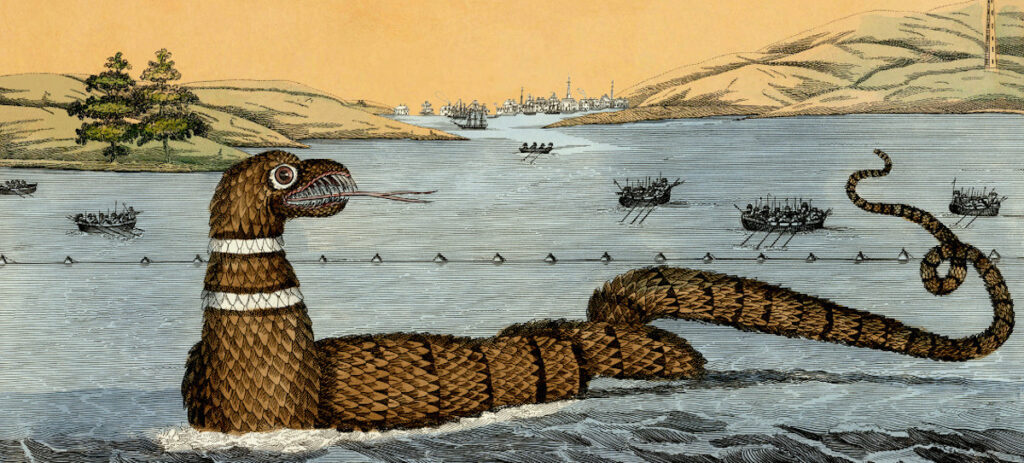Cryptids are creatures or plants whose existence is suggested but not substantiated by scientific consensus. Examples: Bigfoot, Nessie the Loch Ness Monster.
Defining Cryptids: The Mysterious Creatures of Lore
By definition, cryptids exist somewhere between myth and possible fact. These are creatures or plants that have been claimed to exist based on eyewitness accounts or tangible proof but have not been confirmed by the scientific community. Tales of sea monsters, elusive woodland creatures, and flying beings have been passed down through generations in cryptid stories that transcend countries and ages.
Related: Which Cryptid Are You?
Delving Deeper: The Realm of Cryptozoology
These cryptid-like creatures are the subject of the branch of zoology known as cryptozoology. While traditional zoology focuses on the study of existing creatures, taxonomy, and their behavior, cryptozoology explores unexplored territory in an effort to find proof of entities that are still not recognized by mainstream science. The objective of a cryptozoologist is to comprehend a creature’s habits, habitat, and place in the ecosystem, not merely to establish its existence.
Famous Cryptids: From Sea to Land
Despite the fact that the term “cryptid” may appear mysterious, many of these purported animals have become ingrained in popular culture. A long-necked creature emerging from the water’s depths is described in Scottish legends about the Loch Ness Monster. Bigfoot is described as a gigantic, ape-like creature that prowls the woods in North America. The Yeti, also known as the Abominable Snowman, is a large, elusive creature that roams the Himalayas and leaves cryptic tracks in the snow.
Despite not being scientifically proven, each of these species has been supported by a large number of eyewitness reports, hazy photos, and even dubious physical evidence like fur or footprints.
Cryptids: Myth or Reality?
Are cryptids real or are they the result of human imagination and a craving for the enigmatic? This is still the most pressing subject. Many cryptid sightings, according to skeptics, are either hoaxes, false identifications, or exaggerations. Supporters of cryptozoology point out that many species that were originally classified as cryptids have since gained acceptance in the scientific world. A fish that was supposed to have vanished 65 million years ago, the coelacanth, was found to still be alive.
The Race for Proof: Cryptids’ Position in Modern Science
One cannot dismiss the appeal these creatures have, despite the ongoing controversy over whether cryptids actually exist. Cryptids have caught our collective imaginations for a variety of reasons, including the excitement of a prospective discovery and our propensity for the mysterious. The race is on to either prove the existence of these enigmatic entities or to ultimately dispel the tales as technology develops and our capacity to explore the farthest corners of our globe increases.
Conclusion: The Enduring Legacy of Cryptids
Cryptids and cryptozoology provide a tantalizing window into the unsolved mysteries of our world, whether they are viewed with skepticism or belief. These stories serve as a reminder of the great unknown, the difficulties of exploration, and the excitement of discovery as we continue to investigate and learn. The hunt for cryptids is a trip into the very heart of human curiosity, not just a search for novel creatures.




